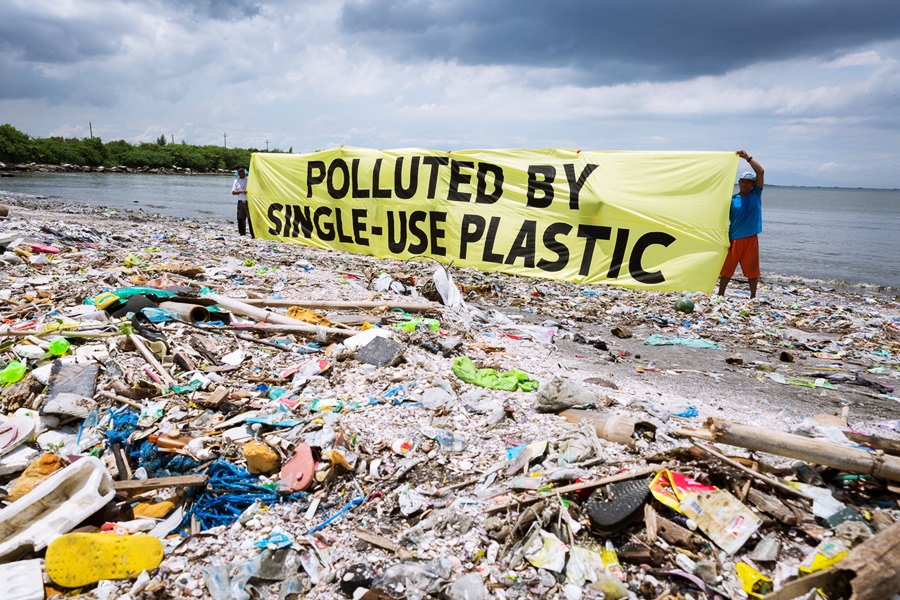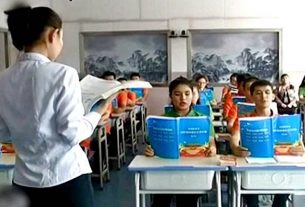Tue 07 January 2020:
If the current trend continues and one billion tons of plastic is produced annually by 2050, very serious health and waste problem may occur globally, according to an expert on plastic waste.
“We could see more plastic in the sea than fish. Land could be filled with abandoned mountains of plastic garbage,” Sedat Gundogdu, an expert on sea waste and microplastics at Turkey’s Cukurova University, told Anadolu Agency.
Noting that plastics are divided into macroplastics, microplastics and nanoplastics, he said nanoplastics, in particular, are extremely difficult to identify and can affect people through contamination of the food chain.
“Macroplastics are also the main source of micro- and nanoplastics. While [entanglement by] macroplastics could lead to amputation among many forms of wildlife, and marine species, for example, can suffocate and die from plastic ingestion, micro- and nanoplastics are threats to all living creatures, including the smallest species,” he added.
Classifying plastics by their chemical structure, Gundogdu said polystyrene rigid, polyvinyl chloride (PVC), polyethylene and polyethylene terephthalate (PET) are serious threats after becoming waste, which is the main reason many countries want to send plastic waste to other countries.
“Despite the fact that plastic makes human life easier, its dangerous properties are ignored. There is no other material that has entered almost the entire sphere of our lives and carries so much risk,” he said, adding plastic is a toxic chemical cocktail.
Touching on the dangers of plastics to animal species, Gundogdu said many turtles can suffer serious injuries that lead to amputation of limbs because they become entangled in plastic waste while some can suffocate and die from plastic ingestion.
“For example, 300 endangered sea turtles were found dead off the coast of Mexico [in 2018] because they were caught in an abandoned [plastic] fishing net. Similarly, many large whale species are dying due to plastics in seas,” he added.
He went on to say that the fact that plastic contains many other chemicals and pollutants makes it a “Trojan horse.”
“In other words, while plastics make human life easier, they can also darken the lives of many living things.”
‘Where isn’t there plastic?’
Turning to the relationship between plastics and climate change, Gundogdu highlighted that from production to recycling, plastic contributes to the climate crisis as it is made from oil, which is one of the main sources of greenhouse gasses.
“The amount of greenhouse gas emitted from plastic production and burning was estimated at over 850 million tons in 2019, equivalent to the emissions from around 189 coal-fired power plants,” he said.
He added that the estimated amount of greenhouse gas emissions from plastics will increase to 2.8 billion tons by 2050.
“Plastic pollution may be having a less direct but ultimately greater role in climate change through its impact on the species that form the foundation of oceanic food chains and provide the biological carbon pump that sequesters carbon in the deep oceans,” said a report released last May by the Center for International Environmental Law.
Reiterating the dangers of plastics to public health, the environment and the climate, Gundogdu said the “easy, fast lifestyle” should be given up.
“Apart from the necessary areas, we should stop using plastic intensively and we should turn to product designs suitable for re-use and need to implement the deposit-refund system and the prohibition of single-use plastics.
“Plastic is everywhere, and I think the question should now be ‘Where isn’t there plastic?’ We are only at the beginning of our understanding of the problems associated with this issue,” Rebecca Prince-Ruiz, founder and executive director of the Plastic Free Foundation, told Anadolu Agency.
Mentioning the plastic threat in the seas, Ruiz said eight million tons of plastic enter oceans each year, more than 270 marine species are affected by marine debris, and it is estimated that 99% of seabirds will have ingested plastic in the next 30 years.
“As a material, plastic has its advantages…Plastics have enabled us to transport food and other goods across the other side of the world and have led to situations whereby people in Europe drink water in plastic bottles that has come from Fiji,” she said.
Despite the advantages to daily life, however, she thinks that people should be aiming for a world without plastic waste.
“We need to significantly reduce our use of single-use plastics, and where it is used there have to be systems in place to collect and reuse that material,” Ruiz said, adding plastics are inherently linked to the rise in consumption of resources and modern consumer culture.
Touching on the Plastic Free July campaign, which she founded, she said an estimated 230 million people globally took part in the “challenge” last year and chose to refuse at least one single-use plastic.
Plastic Free July, led by the independent non-profit Plastic Free Foundation and celebrated annually by communities around the world, is a campaign for a world without plastic waste.
“This record shows that many people worldwide are concerned and want to take action — and lots of small steps add up to make an impact,” she added.
The UN estimates that 8.3 billion tons of plastic have been produced since the early 1950s.
-Anadolu Agency
Think your friends would be interested? Share this story!





